Water & Sewer
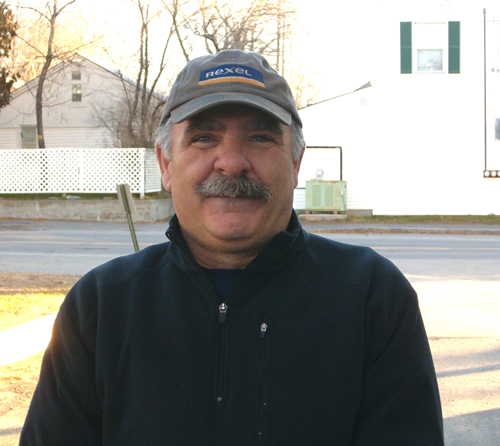
Contact
John Coffey, Operator:
(603) 304-9380
Tours are available upon request

Quarterly Water Quality Reports:
2023: Quarter 2
2023: Quarter 1
2022: Quarter 4
2022: Quarter 3
Consumer Confidence Report Canaan Water Department 2024
Click here for the full 2024 Consumer Confidence Report for Canaan NH
Click here for the full 2023 Consumer Confidence Report for Canaan NH
Click here for the 2022 Public Notification of Chlorination By-Products
What is a Consumer Confidence Report?
The Consumer Confidence Report (CCR) details the quality of your drinking water, where it comes from, and where you can get more information. This annual report documents all detected primary and secondary drinking water parameters, and compares them to their respective standards known as Maximum Contaminant Levels (MCLs).
The sources of drinking water (both tap water and bottled water) include rivers, lakes, streams, ponds, reservoirs, springs, and wells. As water travels over the surface of the land or through the ground, it dissolves naturally-occurring minerals and, in some cases, radioactive material, and can pick up substances resulting from the presence of animals or from human activity. To learn more about the water in our local area, click on the link to read the full report.
Water Quality History:
The primary issues for previous years were chlorination residuals levels in the water and their impact on dissolving lead and copper in older plumbing systems. The key to improved water was to decrease the use of chlorine. The Canaan water system has addressed these issues by changing water sources and managing chlorination better. Quarterly Testing indicates that the residuals are being properly managed.
Residuals from chlorination may be a cancer risk if they are too high. The Canaan water system has been actively working to reduce the use of chlorination through the use of deep water wells and better metering of chlorine. The results during the last year show no tests that exceed state recommended levels.
A few homes in Canaan Village have plumbing that leaches lead into their water.
Advice if you have Lead
If lead is found present in your home, we will notify you.
Lead can enter your home from lead plumbing materials which can include pipes from the streets, interior pipes, faucets, fittings and the solder that holds them all together. If these fixtures become corroded they can begin to release lead into the water. Corrosion is most likely to happen when water has a high acid or low mineral content and sits inside pipes for several hours.
While homes built before 1986 are the most likely to have lead plumbing, it can be found in newer homes as well. Until two years ago, the legal limit for “lead-free” pipes was up to 8% lead. As of January 1, 2014, all newly installed water faucets, fixtures, pipes and fittings must meet new lead-free requirements, which reduces the amount of lead allowed to 0.25%. But that doesn’t apply to existing fixtures, such as what is found in many older homes.
Until you eliminate the source of lead in your home water, you should take the following steps any time you wish to use tap water for drinking or cooking, especially when the water has been off and sitting in the pipes for more than 6 hours:
- Before using any tap water for drinking or cooking, flush your water system by running the kitchen tap (or any other tap you take drinking or cooking water from) on cold for 1-2 minutes.
- Then, fill clean container(s) with water from this tap. This water will be suitable for drinking, cooking, preparation of baby formula, or other consumption.
- To conserve water, collect multiple containers of water at once (after you have fully flushed the water from the tap as described).
In either situation, drink or cook only with water that comes out of the tap COLD. Water that comes out of the tap warm or hot can contain much higher levels of lead. Boiling this water will NOT reduce the amount of lead in your water.
If the lead in your home’s water is from a pipe from the street, additional flushing is necessary any time you wish to use tap water for drinking or cooking, especially when the water has been off and sitting in the pipes for more than 6 hours.
- Before using any tap water for drinking or cooking, run high-volume taps (such as your shower) on cold for 5 minutes or more.
- Then, run the kitchen tap on cold for 1-2 additional minutes;
- Fill clean container(s) with water from this tap. This water will be suitable for drinking, cooking, preparation of baby formula, or other consumption.
- To conserve water, collect multiple containers of water at once (after you have fully flushed the water from the tap as described).
Children and pregnant women are especially vulnerable to the effects of lead exposure. Therefore, for homes with children or pregnant women and with water lead levels exceeding EPA’s action level of 15 ppb, CDC recommends using bottled water or water from a filtration system that has been certified by an independent testing organization to reduce or eliminate lead for cooking, drinking, and baby formula preparation. Because most bottled water does not contain fluoride, a fluoride supplement may be necessary.
Advice for lead safe water practices after plumbing work in housing with lead water lines or lead solder. These practices include:
- Make sure that repairs to copper pipes do not use lead solder.
- Testing water after plumbing work in older housing. Please contact your state lead program for information about water testing in your area.
- Flushing water lines before using the water for drinking or cooking.
Canaan’s water and sewer is billed on the actual flows that you use – little changes in your home can save thousands of gallons per month. Open the following information sheets to see how you can lower your water and sewer bills.
Great Tips for Water Conservation
More Ideas from NH Department of Environmental Services
Student Worksheet for Water Saving
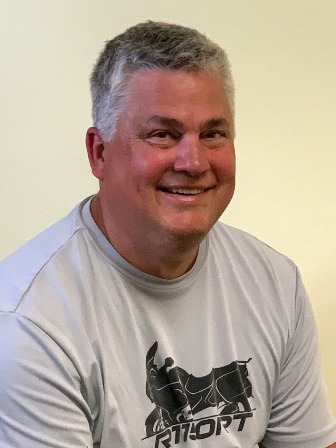
Stephen Freese is the Consumer Advisor to the Canaan Water & Sewer Supervisors (Select Board).
Stephen serves as the official water and sewer representative to the Board of Selectmen on water and sewer issues, including user fees. This representative must be from the Water/Sewer District so that there is a true advocate for users’ needs. You may contact him with questions or concerns at sgfreese@gmail.com
Canaan has two sources of water- Canaan Street Lake and drilled deep well.
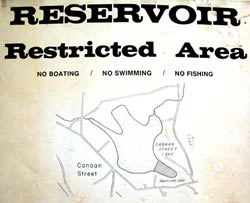
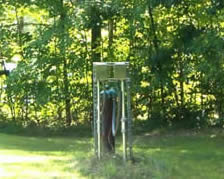
Two types of natural contaminants:
normal lake water contamination and radon from deep water well.
Two strategies for removal of contaminants:
Lake water is treated by sand filter and chlorinated.
Well water is treated by blending with lake water to reduce radon trace levels.
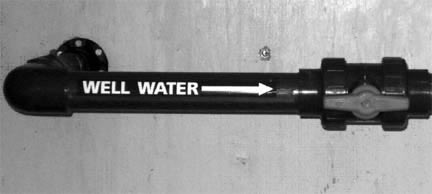
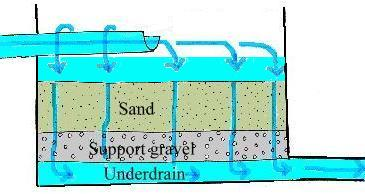
Strategy for reduction of chlorine and chlorine residuals:
Use less lake water by blending well water
Storage and Distribution:
Water is stored in 286,000 gallon storage tank.
Water is transmitted by pipeline throughout the village to 158 residences and businesses.
Individual septic tanks process solids through bacterial degradation and then discharge fluid to municipal system.
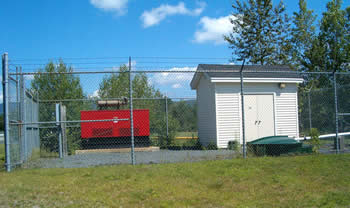
1 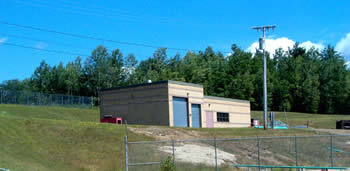
2 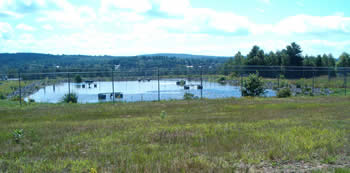
3 
4 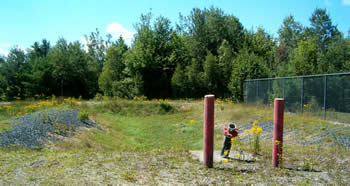
5 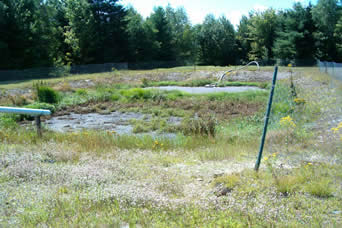
6
- Collection sewer lines transport to a pump station on Depot Street.
- Pump station pumps liquid to Wastewater Plant behind transfer station.
- Lagoons aerate effluent as it comes into wastewater plant to increase dissolved oxygen.
- Treatment plant transfers the fluid that has been aerated to the Rapid Infiltration Beds. Rapid infiltration Beds are like large leach fields: they return the treated fluid to the ground.
- Canaan Wastewater pumps the tanks on the system to remove the decomposed solids which are cured and dried in sludge beds at the wastewater plant and then tilled into the soil.
- The plant’s septage beds also accept septage from other non-municipal septic tanks located in the Town of Canaan.
